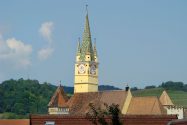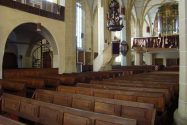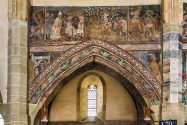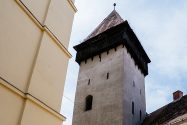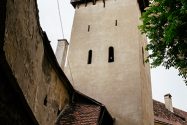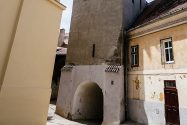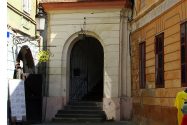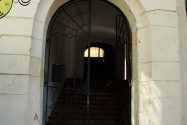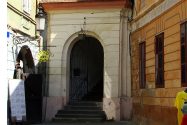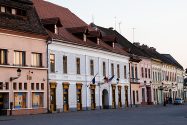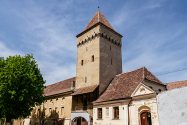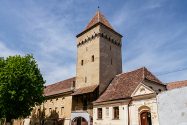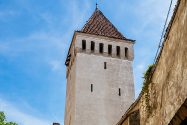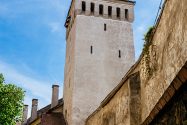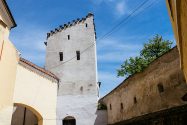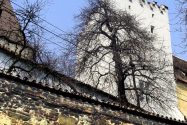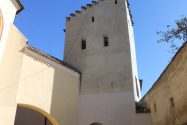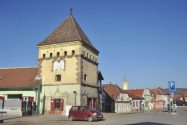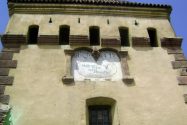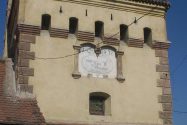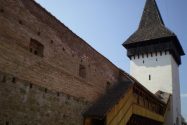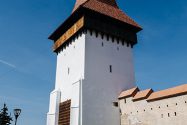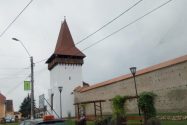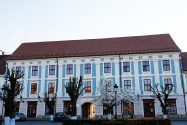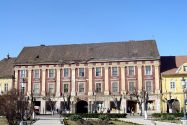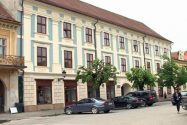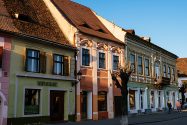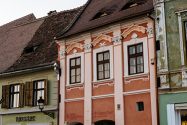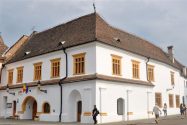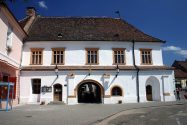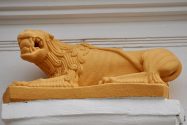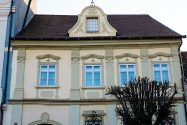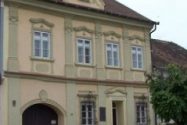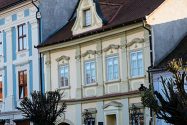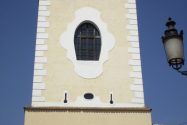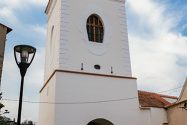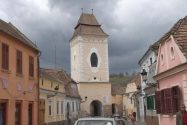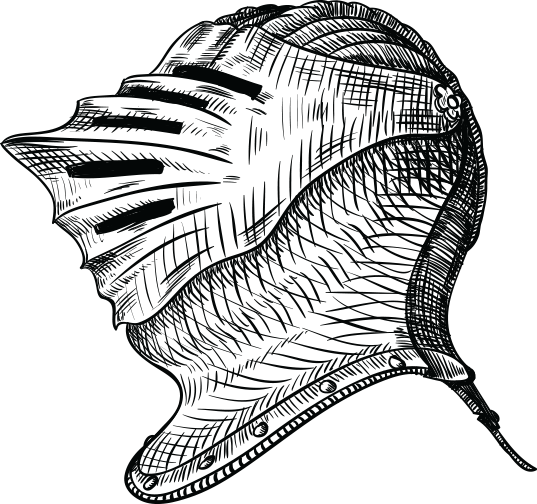
Medieval Medias
Certainly, the period with which Medias identifies itself as one of the most important trade and crafts centers in Transylvania is the medieval period. Historical monuments of an undeniable cultural value have been preserved since this time, and can be admired today in the city that has risen on the banks of the Tarnava Mare
The Church of St. Margaret
It can be considered, rightly, one of the city’s emblems. It is mentioned for the first time in a document in 1447, under the name “Die Evanghelische Pfarrkirche der Heiligen Margarethe aus dem Marktflecken Mediasch”. It is located right in the center of the fortification complex known as the “Castle”. The construction was completed in 1448, as noted in Georg Soterius’ chronicle.
The interior of the church presents a distinct cultural diversity, the paintings of the central nave being the most valuable. Among the paintings it’s possible to see very well painted shields, the coats of Matei Corvin and the Batoresti family, but the altar, restored in 1971, attracts the attention of all who pass the threshold of the church, just like a magnet.
The canopy of the pulpit dates back to 1679 and is the work of the craftsmen Paul Demosch and Sigismundus Moss, with heads are decorated with angels, masks, cherubs and other complex decorative elements. The pipe organ is made by a Saxon craftsman named Johann West and dates back to 1678.
Also of great historical value are the funeral stones. Inside the church there is the tombstone of local humanist Christian Schaeseus, the crucified stone of the priest Georg May and of Bishop Georg Theilesius’ wife, Barbara Theilesius. The Church of St. Margaret has preserved and exhibits many valuable items, such as a bronze chrysanthemum, Turkish carpets from Anatolia, decorative reliefs, old texts and writings.
In harmony with the Church of St. Margaret, there is the Trumpeters’ Tower, raised with three floors in 1500, when Medias became a city. Because of the new elevations made, the initial subassembly has failed and the tower has not kept its vertical position. With a height of 68.5 m, the Trumpeters’ Tower was, in 1969, among the top 12 buildings in the world. The bell dates back to 1488 and kicks the hours with a mechanically operated hammer. In 1880, a clock with four weights of 100 kg was fitted. During the feudal age, this tower was the main observation spot in the city.
The Castle
The ensemble of fortifications in the medieval fortress comprises the following historical monuments:
The chaplain’s house
is built perpendicular to the large side of the parochial house.
The parochial house
is the oldest building in Medias, built outside the first defense wall.
The Tower of the School
located west of the Rope-makers’ Tower, it’s embedded in the school building built in 1713. Only the first two levels can be seen, the upper ones being demolished in the 19th century.
Other medieval monuments
The Hann House
dates back to the 16th century and has a Gothic roof.
The Schuller House
was built in Renaissance style and was restored by renowned architect Hermann Fabini. It was documented in 1558 on the occasion of the MediasDietassembly under the patronage of Sigismund Báthory, but after the restoration of 1995-1997 it was discovered that this house is much older. It has been the residence of the Schuller family, one of the mayors of Medias for many generations, and has functioned as an inn. In the last century it belonged to Helmut Karres.
The Schuster-Dutz House
was built around 1690 and repaired in 1813. It belonged to a well-known local poet who wrote poetry in the Saxon dialect. Between 1783 and 1900, there was a pharmacy on the ground floor. The gate is decorated with an emblem, and the windows on the ground floor are protected by two wrought-iron floral motifs and garlands.
